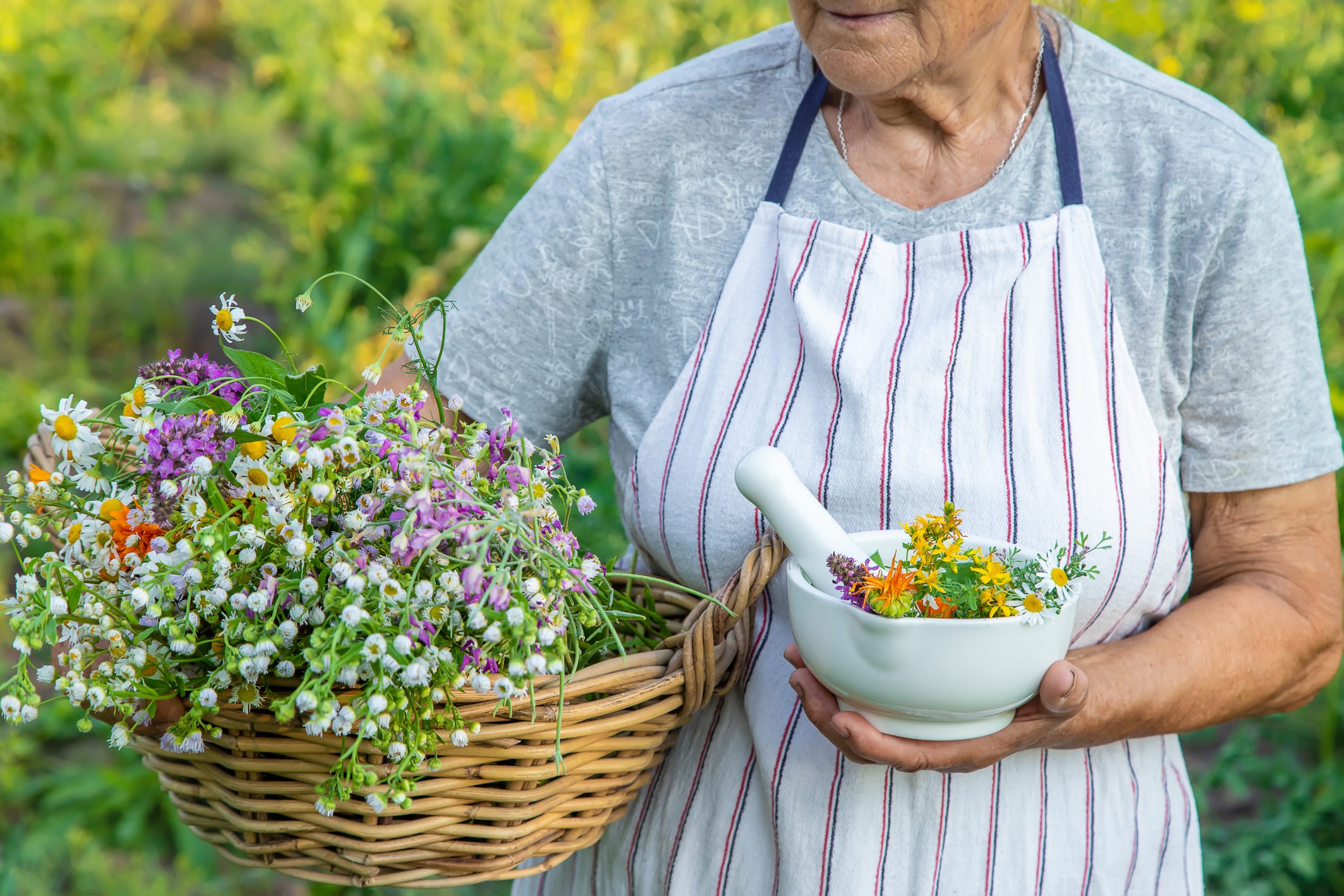
Medicinal and aromatic plants: cultivation or wild collection?
According to an analysis by Fortune Business Insights, the global herbal medicine market will grow from USD 165.66 billion in 2022 to USD 347.50 billion by 2029. This is unprecedented growth, not least as a consequence of the Covid-19 pandemic, when people turned to traditional medicine to defend themselves against the infection.
However, from 2001 to 2014, the global market for medicinal plants (MAP) had already tripled, thanks to their versatility, which allows them to be used in multiple areas such as food and feed, food additives and supplements, cosmetics, medical devices and herbal drugs, biocides and more.
Long-term sustainability at risk
Until recent years, the production of botanicals has been mainly based on wild collection. A practice that is not harmful in itself, but which, with the increasing pressure of commercial demand, over-exploitation, illegal trade and climate change, could pose a risk of extinction for many medicinal plant species, with serious repercussions for their habitats and communities.
According to the study Medicinal and Aromatic Plants: Trade, Production and Management of Botanical Resources,at least one in four flowering plant species worldwide is used to meet the demand for MAP. The Inter-governmental Science Policy Platform on Biodiversity and Ecosystem Services (IPBES) published an evaluation on the sustainability of wild species' use in early 2022, revealing that one in five people globally relies on wild plants, algae and fungi for food and income. The IUCN Red List estimates that over 20% of globally used plant species for medicinal and aromatic purposes are threatened with extinction.
According to the CITES - Convention on International Trade in Endangered Species of Wild Fauna and Flora - database and other estimates, out of the 60,000 species of medicinal and aromatic plants harvested globally, anywhere from 1,280 to 9,000 species are at risk.
Cultivation of MAP: a growing trend
In the face of this systemic long-term sustainability risk, since the 1990s, the Guideline on the Conservation of Medicinal Plants promoted by the World Health Organization (WHO), the International Union for Conservation of Nature (IUCN), and WWF recommended transitioning from wild collection to cultivation.
This practice has been on the rise. In the 2006 census, only 1% of MAP species came from commercial cultivation, but in the 2022 study Number of Medicinal and Aromatic Plant Species Under Cultivation Is Showing an Upward Trend Globally, evidence of commercial cultivation was found for 3,227 MAP species in 162 different countries.
Medicinal and aromatic plants: cultivation or wild collection?
However, the debate regarding the long-term sustainability of the botanicals industry doesn't lean entirely in favor of either wild collection or cultivation. There are pros and cons to consider on a case-by-case basis.
From the perspective of the processing industry, cultivation offers more control at every level, from the entire supply chain to chemical variability, quality standards, price, and supply continuity. On the other hand, cultivation involves higher costs compared to harvesting or investment risks that individual farmers may not always be able to bear. Moreover, exclusive reliance on cultivation could lead to monoculture phenomena, harming biodiversity.
The sustainability of wild harvesting can also be problematic, especially for slow-growing species with limited distribution or those prone to overharvesting.
Social and cultural sustainability
Furthermore, there are concerns about social and cultural sustainability to take into account. MAP harvesting practices provide vital income to numerous marginalized rural populations and are a significant part of the local economy and traditional medicine in the countries of origin. These could suffer irreparable consequences from widespread monoculture or the shifting of cultivation to processing countries.
What to do?
These doubts and questions involve all stakeholders in the botanicals industry toward fair trade that considers biodiversity conservation, sustainable resource use, respect for local populations and their traditions, producer quality needs, economic sustainability of businesses, and good agricultural practices, both in raw material supplying countries and in transformation and extract production countries.
This is an approach that EPO has adopted since its inception, with responsibility and a guarantee of quality, safety, and sustainability of its extracts. On one hand, we ensure the entire harvest is sourced based on the actual cost incurred by small, mostly local farmers who invest in new plants, grown exclusively for us. On the other hand, through universities, we keep the tradition of legal wild plant collection alive so that a vast cultural heritage and a source of livelihood for some rural economies, as well as female empowerment, are not lost.
Learn more about our Ethical Code and EPO's commitments to sustainability: www.eposrl.com/en/code-of-ethics/